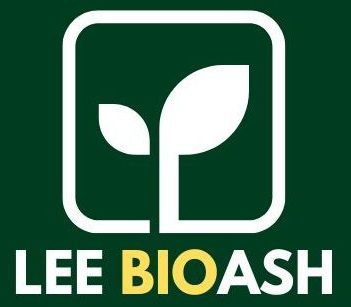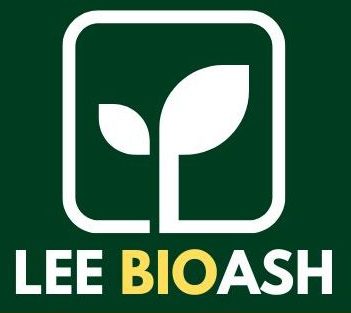LEE BIOASH vs Dolomite: Why Farmers Are Going Beyond Dolomite
Introduction
For decades, farmers across Malaysia have relied on dolomite as the main soil conditioner to treat acidic soils. Dolomite, a mineral rich in calcium and magnesium carbonates, helps neutralize acidity and improves crop productivity. However, in recent years, farmers have started searching for better, sustainable alternatives that not only adjust soil pH but also enrich soil with more nutrients.
One such solution is LEE BIOASH. Produced from the controlled burning of empty fruit bunch (EFB) and woodchip, BIOASH is emerging as a sustainable, eco-friendly, and more effective option compared to dolomite. With its natural alkalinity and nutrient content, BIOASH is proving to be a product that goes beyond dolomite.
1. The Role of Dolomite in Malaysian Agriculture
Dolomite has been widely used for soil treatment because it:
-
Neutralizes acidic soils by raising pH.
-
Provides calcium (Ca) and magnesium (Mg), essential for plant growth.
-
Improves soil structure for better nutrient uptake.
However, dolomite also has limitations:
-
Works slowly, taking time to show results.
-
Supplies only two main nutrients (Ca, Mg).
-
Heavy and costly to transport in bulk.
-
Extracted through mining, which impacts the environment.
2. What is LEE BIOASH?
LEE BIOASH is the ash produced from empty fruit bunches (EFB) and woodchip, both renewable by-products of Malaysia’s palm oil and forestry industries. Instead of being discarded or openly burned, these residues are turned into a high-value agricultural amendment.
Key characteristics of LEE BIOASH:
-
High pH (alkaline) – ideal for neutralizing acidic soils quickly.
-
Potassium content (K₂O 15–19%) – a crucial plant nutrient for growth, flowering, and fruiting.
-
Trace minerals – including calcium, phosphorus, boron, and silica.
-
Eco-friendly – made from biomass waste instead of mining.
This combination makes BIOASH not just a soil conditioner but also a nutrient booster, offering multiple benefits over dolomite.
3. BIOASH vs Dolomite: A Side-by-Side Comparison
| Feature | Dolomite | LEE BIOASH |
|---|---|---|
| Source | Mined mineral (non-renewable) | Biomass ash (EFB + woodchip, renewable) |
| Main Nutrients | Calcium, Magnesium | Potassium (15–19% K₂O), Calcium, Trace Minerals |
| Soil pH Effect | Slow-acting | Fast-acting, strong neutralization |
| Nutrient Value | Limited | Multi-nutrient (K, Ca, B, Si, etc.) |
| Transport & Application | Heavy, bulky | Lighter, easier to spread |
| Environmental Impact | Mining impact | Waste-to-resource, sustainable |
Clearly, BIOASH goes beyond dolomite in both performance and sustainability.
4. Benefits of Going Beyond Dolomite with BIOASH
a) Faster Soil Neutralization
Thanks to its higher alkalinity, Bioash works faster than dolomite in correcting acidic soils, allowing farmers to see results sooner.
b) Adds Potassium – A Key Difference
Dolomite only provides calcium and magnesium. In contrast, Bioash contributes 15–19% potassium (K₂O), one of the three major nutrients required for plant growth. This improves root development, flowering, and fruit quality.
c) Better Yields & Crop Health
By supplying multiple nutrients and correcting soil acidity, Bioash supports stronger, healthier crops, leading to higher yields compared to traditional dolomite treatments.
d) Cost Efficiency
Because Bioash improves both pH and soil fertility, farmers can reduce their dependence on chemical fertilizers, lowering costs in the long term.
e) Eco-Friendly & Renewable
Using Bioash helps reduce agricultural waste, prevents open burning, and provides farmers with a green alternative to mined dolomite.
5. Farmers’ Experiences in Malaysia
Farmers across Malaysia, especially those in paddy cultivation and oil palm plantations, are increasingly adopting BIOASH as an alternative to dolomite.
Some reported benefits include:
-
Faster greening of paddy fields.
-
Healthier palm trees with stronger fronds.
-
Reduced fertilizer bills due to potassium already in BIOASH.
-
Easier application compared to heavy dolomite.
6. Frequently Asked Questions (FAQ)
Q1: Can BIOASH replace dolomite completely?
Yes. Bioash neutralizes acidic soils like dolomite but also adds potassium and other minerals.
Q2: What crops benefit from BIOASH?
Bioash is suitable for paddy, oil palm, fruits, vegetables, and other commercial crops.
Q3: How do I apply BIOASH compared to dolomite?
It can be broadcast or mixed into the soil, just like dolomite, but is lighter and easier to handle.
Q4: Is BIOASH safe for the environment?
Yes. It recycles agricultural waste into a useful product, reducing environmental pollution.
7. Why LEE BIOASH is the Future of Soil Improvement
As Malaysia moves towards sustainable agriculture, farmers are realizing that dolomite alone is no longer enough. With its multi-nutrient profile, faster results, and eco-friendly origins, LEE BIOASH is proving to be the next-generation soil conditioner.
By choosing BIOASH, farmers not only improve their harvests but also support a circular economy where agricultural waste is turned into valuable resources.
Conclusion
Dolomite has been a reliable soil conditioner for years, but its limitations are becoming more apparent in today’s agriculture. LEE BIOASH offers everything dolomite does – and more. With 15–19% potassium (K₂O), added trace minerals, faster soil pH correction, and a renewable source from empty fruit bunch and woodchip, Bioash is the sustainable solution for Malaysia’s future.
Farmers are moving beyond dolomite, and the results speak for themselves. For healthier soils, stronger crops, and sustainable farming, the choice is clear: LEE BIOASH – Beyond Dolomite.

